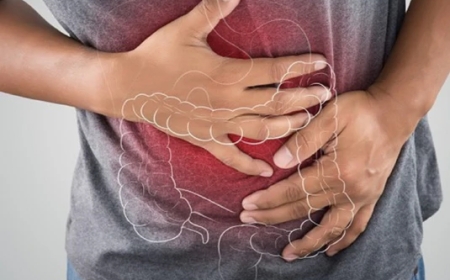Best Practices for Autoclave Placement in Sterilization Areas
Discover essential best practices for autoclave placement in dental clinic decontamination rooms to enhance safety, workflow, and compliance in sterilisation areas.

Proper autoclave placement within sterilization areas is a critical component of effective dental clinic design. However, where and how an autoclave is installed can significantly affect workflow, safety, and compliance with hygiene standards.
This blog delves into the best practices for autoclave placement, emphasising practical advice and design considerations tailored for UK dental clinics. With a focus on decontamination room design, we explore how strategic positioning supports efficient sterilisation processes and promotes a seamless, safe working environment.
Understanding the Role of Autoclaves in Dental Clinic Design
An autoclave is central to a dental clinics decontamination process, sterilising instruments through high-pressure steam. Correct placement within the decontamination area ensures that cross-contamination risks are minimised and sterilisation protocols are adhered to.
Dental clinic designmust incorporate the autoclave thoughtfully, ensuring it integrates with the overall workflow from instrument cleaning to packaging and storage.

Key Principles in Decontamination Room Design
Before focusing on autoclave placement, its essential to understand the broader design principles of the decontamination room, which include:
- Adequate Ventilation:Proper airflow reduces humidity and maintains air quality.
- Sufficient Space:Room for equipment, staff movement, and storage without overcrowding.
- Easy-to-Clean Surfaces:Hygiene compliance requires smooth, impervious materials.
- Logical Equipment Placement:Equipment like sinks, ultrasonic cleaners, and autoclaves arranged to support a unidirectional workflow.
Adhering to these principles forms the foundation for effective autoclave placement.
Best Practices for Autoclave Placement
1. Position in the Clean Area of the Decontamination Room
Autoclaves must be installed in the clean zone of the decontamination room where sterilised instruments are handled post-processing. This prevents contamination of sterilised items and ensures a clear division between contaminated and sterile workflows.
Placing the autoclave near the packaging and storage areas streamlines the process and minimises unnecessary movement.
2. Maintain Adequate Clearance Around the Autoclave
Sufficient space around the autoclave is crucial for:
- Safe loading and unloading of instruments.
- Routine maintenance and repairs.
- Allowing doors to open fully without obstruction.
This also helps maintain ergonomic safety for staff.
3. Avoid Positioning Near Sinks or Waste Disposal Areas
While sinks and waste bins are integral todecontamination room design, autoclaves should be positioned away from these to reduce contamination risks. Moisture from sinks and waste areas can compromise sterilisation and increase infection hazards.
A well-planned layout separates dirty cleaning zones from the clean sterilising zones.
4. Consider Ventilation and Heat Management
Autoclaves generate heat and moisture during cycles, so ensuring adequate ventilation is essential. Position the autoclave near ventilation outlets or within a well-ventilated space to maintain room comfort and equipment longevity.
5. Ensure Accessibility for Multiple Staff Members
In busy clinics, several team members may need to use the autoclave simultaneously. Positioning it in a central yet unobtrusive location within the decontamination room allows smooth traffic flow and reduces bottlenecks.
Dental clinic design should also consider sightlines and communication between team members to enhance coordination.
Integrating Autoclave Placement into Overall Clinic Design
Autoclave placement is not an isolated consideration but fits into the larger scheme of dental clinic design. Key points include:
- Workflow Efficiency:The autoclave should facilitate a logical instrument journey, from dirty to clean to storage.
- Safety and Compliance:Proper placement supports adherence to infection control regulations such as HTM 01-05.
- Aesthetic Considerations:While functional, sterilisation areas should also reflect a clean, organised, and professional image.
Dental clinic design professionals often collaborate with dental surgery contractors to ensure the autoclave and related equipment are installed to the best effect.
Common Mistakes to Avoid in Autoclave Placement
Overcrowding the Decontamination Area
One of the most common mistakes in autoclave placement is positioning it in cramped corners or tight spaces that restrict staff movement. When the sterilisation area is overcrowded, it not only disrupts the smooth flow of instruments through the cleaning and sterilisation process but also increases the risk of accidental spills, equipment damage, or even staff injuries. Crowded workspaces can cause unnecessary delays as team members have to wait or navigate around each other, which ultimately affects clinic efficiency and patient turnover. Designing the decontamination room with clear, unobstructed pathways around the autoclave is essential for safe, efficient operations.
Ignoring Maintenance Access
Autoclaves require regular maintenance and occasional repairs to function reliably and comply with safety standards. Failing to allocate sufficient space around the unit for technicians to perform routine servicing or emergency fixes can result in costly downtime and prolonged disruptions to the sterilisation workflow. Maintenance access should include enough clearance to open service panels fully, manoeuvre tools and equipment, and safely replace parts without removing the autoclave entirely. Planning for this access during the design phase avoids expensive retrofits and keeps the clinic running smoothly.
Poor Electrical and Plumbing Planning
Autoclaves are power-intensive devices that often also require a dedicated water supply and drainage connections. Inadequate electrical planningsuch as insufficient voltage capacity, lack of dedicated circuits, or poor positioning of outletscan lead to frequent tripping of breakers, unsafe wiring, or operational inefficiencies. Similarly, without properly designed plumbing for water intake and waste drainage, the autoclave may experience water pressure issues or leaks, risking damage to the machine and surrounding infrastructure. Early coordination between dental clinic design teams and dental surgery contractors is vital to ensure electrical and plumbing systems meet the autoclaves technical specifications and safety requirements.

Practical Checklist for Autoclave Placement in Decontamination Rooms
|
Best Practice |
Reason |
|
Position in the clean zone |
Prevents cross-contamination |
|
Provide minimum 90cm clearance |
Ensures safety and access |
|
Keep away from sinks and waste |
Reduces contamination risks |
|
Ensure proper ventilation |
Manages heat and moisture |
|
Allow access for multiple users |
Facilitates smooth workflow |
|
Plan electrical and plumbing needs |
Avoids installation and operation issues |
Effective autoclave placement enhances patient safety by ensuring instruments are sterile and reduces staff stress by facilitating an efficient workflow. According to healthcare facility design guidelines, clinics with optimised sterilisation areas report smoother operations and higher staff satisfaction.
A well-integrated sterilisation zone also reinforces patient confidence, reflecting a practice that prioritises hygiene and professionalism.
Conclusion
Placing an autoclave correctly within the decontamination room is fundamental to a safe, efficient, and compliant dental clinic design. Following best practices in positioning, clearance, ventilation, and workflow integration creates a sterilisation area that supports excellent infection control and operational success.
For tailored advice and expert dental clinic design that includes seamless autoclave placement, partnering with skilled professionals like dental surgery contractors is invaluable.
To transform your clinics sterilisation area with smart, compliant design solutions, trust Divo Interiors Ltd to guide you through the process expertly.





































